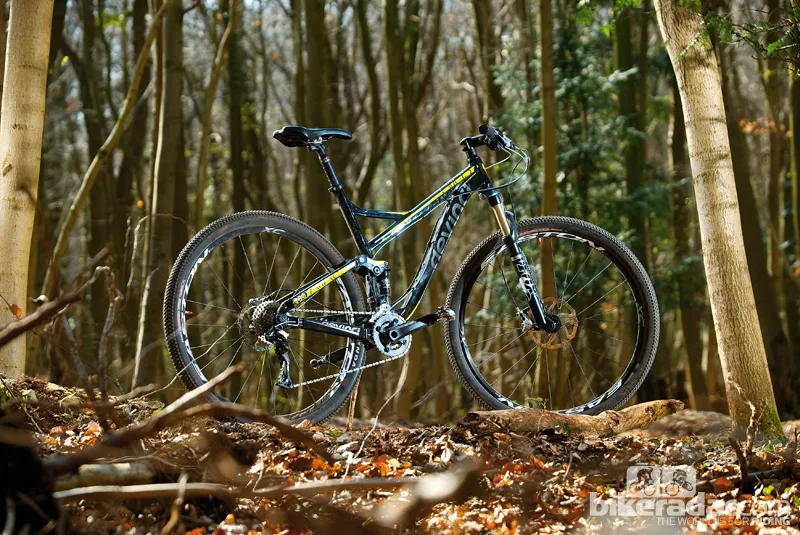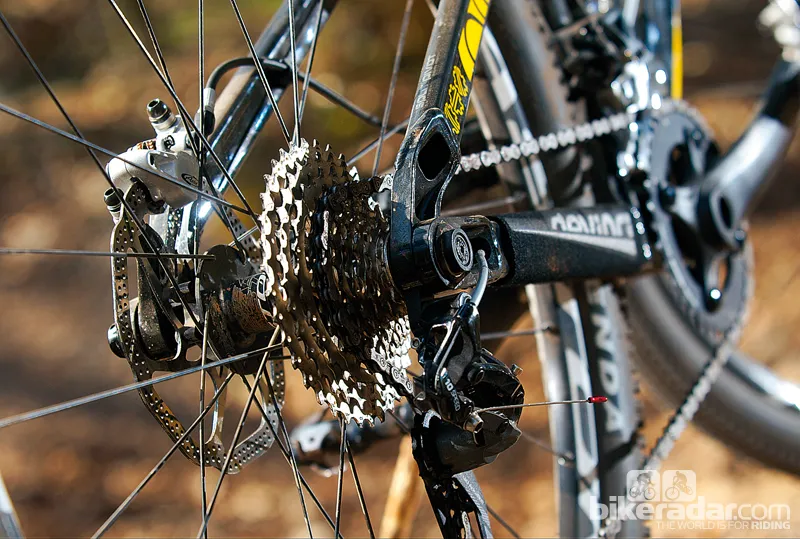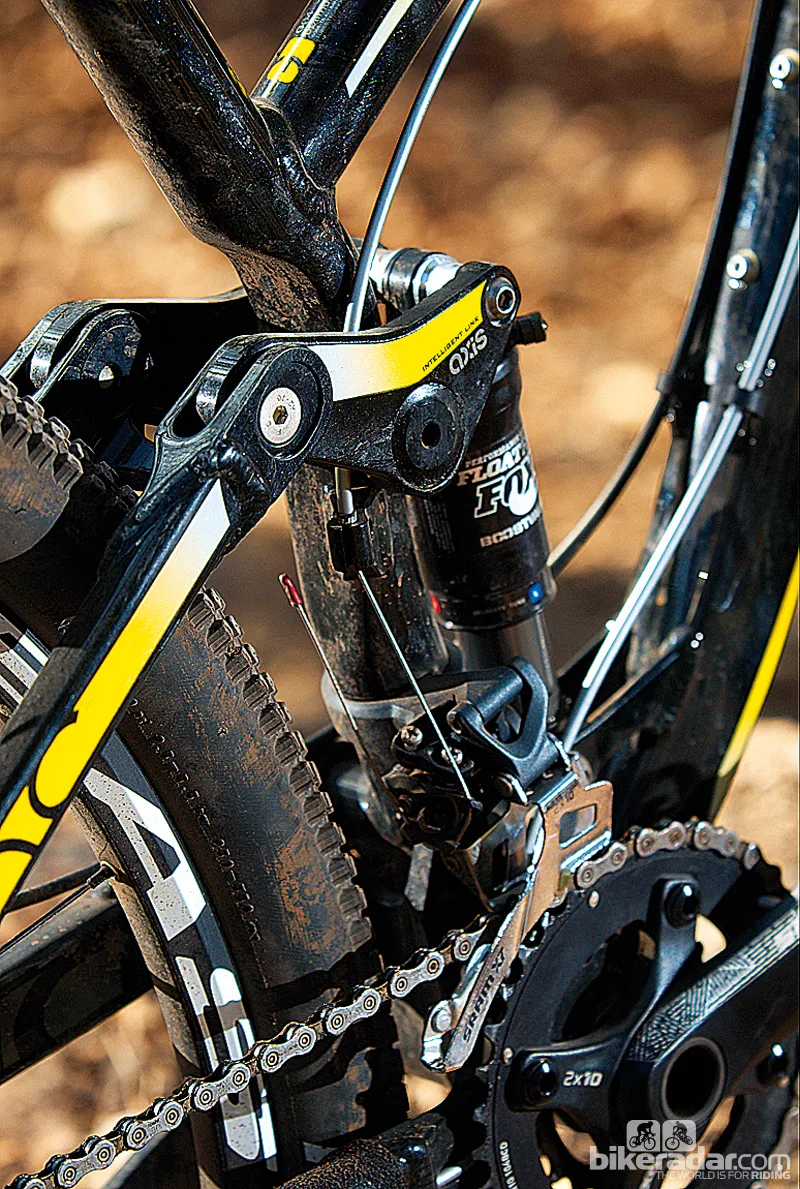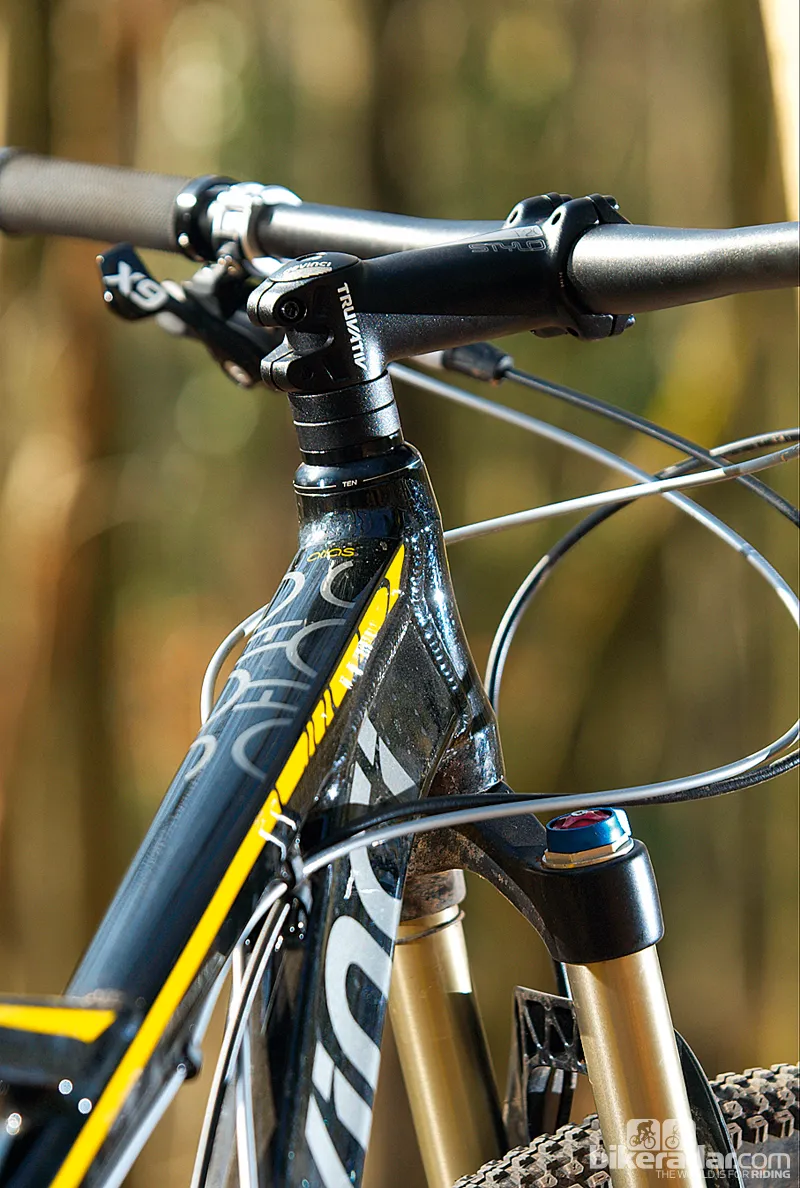It’s often overlooked, but 29in wheels have freed frame designers and riders from the creeping tyranny of too much suspension travel. We could (and do) argue about how much travel is ‘too much’, but bigger wheels roll smoother than smaller ones – fact. That means you can get away with less shock absorption in the chassis. Some riders like the way that results in a bike that feels far more planted than most longer travel bikes.
Ride and handling: Low on travel but high on trail-taming ability
The Devinci Atlas comes with 110mm of travel out back and 100mm up front, but handles the most demanding terrain as well as many bikes with another 20 to 30mm of travel. Dave Weagle’s Split Pivot dropout setup helps, as does Devinci’s frame design and parts choice. This is a well-controlled machine that fills the good-at-almost-anything middle ground between cross-country speed machine and big terrain slammer.
For those who aren’t aware, Dave Weagle’s Split Pivot design centres on the wheel axle. Its impact, simply put, is to allow maximum suspension efficiency and traction without interference from pedal and brake forces. On the Atlas it combines with a shock leverage ratio that provides lots of small bump sensitivity, but very precise tuning of Fox’s RP2 shock is crucial to get maximum performance. We found it took a few attempts to get it dialled just right, as there’s a fine line between it not seeming to be doing much and blowing all the way through its travel on every compression.
Once properly dialled, the low weight combines with the stable back end to create an excellent climber. The axle-centric pivot works with the swingarm and pivot locations to allow the sort of performance that often makes you forget you’re on a suspension bike, to the point where the ProPedal function is almost redundant.
We’ll get the bike’s one foible out of the way before delving deeper. While the low slung shock and rocker keeps the centre of gravity low and the ride incredibly stable, that super-active back end leaves you, on rougher terrain, painfully aware of the bottom bracket drop as you pedal into bends. We experienced a fair few pedal strikes through dips and corners, but adding more air to the shock inevitably numbs away small bump compliance.
We found an acceptable setup after a lot of playing around with the compression damping, but if your regular trails are strewn with compression dips or square-edged hits you don’t want to freewheel, it’s worth resetting the shock with a volume reduction kit. Technically called an AirSpring Volume Tuning Kit, these cost around £25 and firm up the compression from mid-stroke onwards, stopping the shock reaching full travel so easily. The distributors say they’re happy to include such a kit free of charge.
Despite fiddly stop-start adjustments during the first ride, and again whenever a rider with a different body mass took over, we quickly learned to love the feel of the Atlas on all sorts of different trails. The very short back end means it handles tight switchback turns better than any big wheeler we’ve tested, and the back end is constantly surprising in its poise over hard-edged hits that often upset short-travel bikes like this. The frame’s lateral stiffness is noticeably better than other full-suss 29ers we’ve tested too, under acceleration and in high impact terrain.
The Atlas is an unusual bike. Its short back end, direct pedalling feel, lateral rigidity and impressive stability mean you spend some time wondering how much the suspension is actually doing, and how much is the smoothing effect of the big wheels. But then you look at the shock and notice the O-ring right off the end of the shaft, and realise you’ve been at the full 110mm of travel at some point.
The only time you really notice is when you slap into a compression and crack a pedal on the ground on the way out, but you soon learn to level the pedals for a second when you know what’s coming – or fit a shock volume reduction kit. For the sake of the superb performance elsewhere, it’s a minor compromise.

Frame and equipment: Innovative geometry for a 26in feel
Before we get into the Split Pivot part of the frame, there are other distinctive design factors that set the Atlas apart. The radically kinked-forward seat tube allows for a back end that’s almost the same dimensions as on 26in-wheeled bikes, yet still has loads of mud drop-through room around big tyres. Bear in mind that the resulting super-slack (66-degree) angle of the upper seat tube means you need to be careful with frame sizing, as putting the saddle up or down substantially changes the reach to the handlebar – which is already longer than average. We still liked the aesthetics of the frame though, and appreciated the generous standover clearance on steep, stop-start-falter-shuffle switchbacks and long, tricky drops.
The sweetly shaped top and down tubes are substantially reinforced behind the tapered head tube, and the fact the head tube is so short keeps the front end as low as on most 26ers. We ran it with a flat stem, a 27.5in flat bar and an inch of washers under the stem, but there’s plenty of adjustment potential for different demands. There’s a single (fairly crowded) set of bosses for a water bottle and the cable routing is not the neatest, but it does the job, with the full outer cable running to the rear gear mech through the chainstay.
The Atlas is offered by UK distributor Haven’s retail outlet Freeborn, as a frame alone for £1,611, with a mid-range parts spec for £2,380.49, or with the SRAM X9 and Fox forked-equipped version on test here for £3,262.49. At just over 12kg (27lb) it’s among the lightest big-wheeled full suspension bikes we’ve tested.



